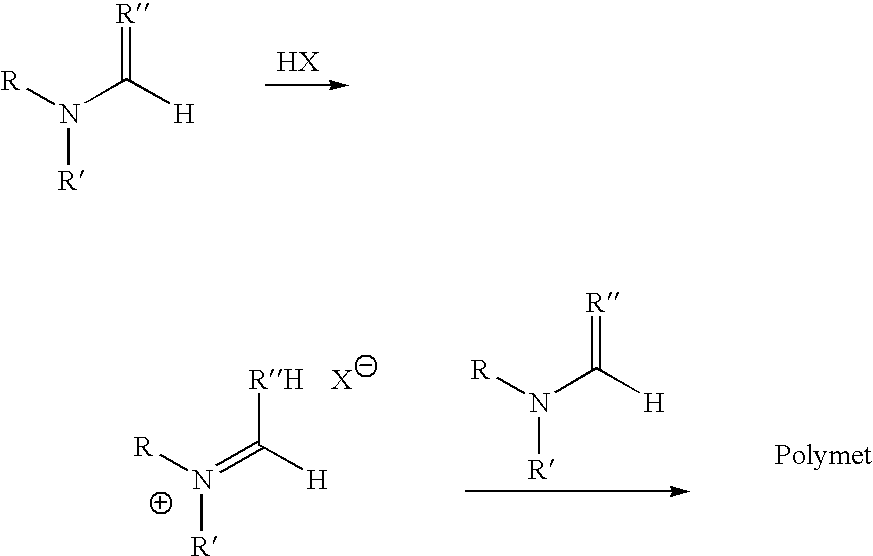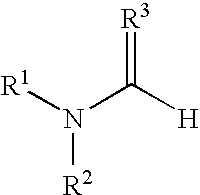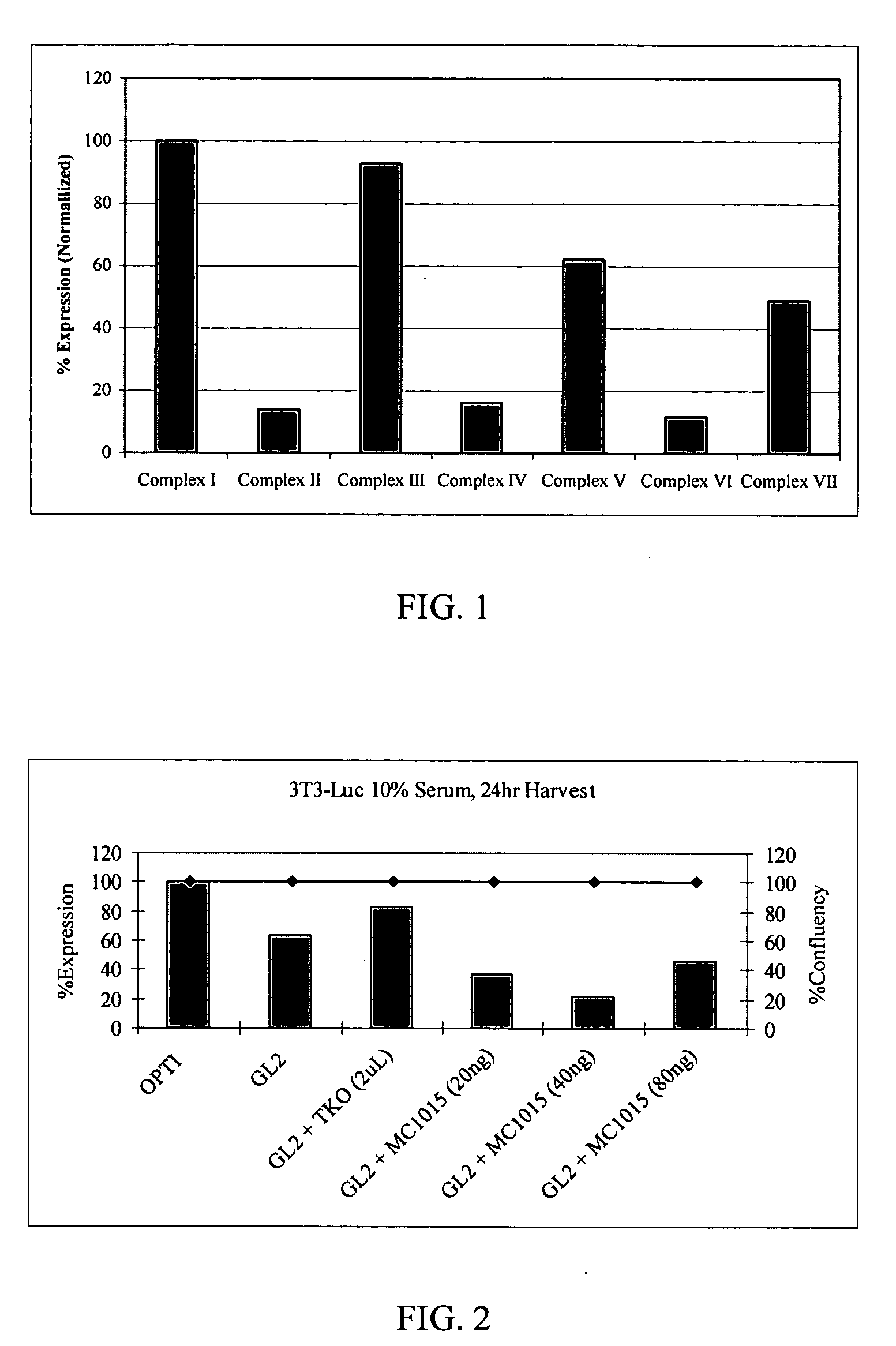Polymerized formamides for use in delivery of compounds to cells
- Summary
- Abstract
- Description
- Claims
- Application Information
AI Technical Summary
Benefits of technology
Problems solved by technology
Method used
Image
Examples
example 1
Polymerization of N,N-Dimethylformamide (MC1015)
[0099] Method A: A solution of HCl in diethyl ether (1 mL, 1.0 M, Aldrich Chemical Company) was cooled to −78° C. in a dry ice / acetone bath under N2. N,N-Dimethylformamide (85 mg, 1.2 mmol, anhydrous, Aldrich Chemical Company) was added dropwise. The resulting precipitate was isolated by centrifugation, washed with diethylether (2×2 mL), dried under a N2 stream, and placed under high vacuum to afford the imidate (30 mg, 23%). The resulting imidate was dissolved in DMF (300 μL, anhydrous, Aldrich Chemical Company) and allowed to stand at room temperature for 3 days.
[0100] Method B: N,N-Dimethylformamide (47.2 g, 0.646 mol, anhydrous, Aldrich Chemical Company) was cooled to −20° C., and HCl gas was bubbled through the solution over 30 min. The resulting solution was warmed to room temperature under a blanket of N2 to afford a clear viscous solution.
example 2
Polymerization of N,N-Dibutylformamide
[0101] N,N-Dibutylformamide (4.3 g, 0.027 mol, Aldrich Chemical Company) was cooled to −20° C., and HCl gas was bubbled through the solution over 30 min. The resulting solution was warmed to room temperature under a blanket of N2 to afford a clear viscous solution.
example 3
Polymerization of N,N-Dimethylthioformamide
[0102] N,N-Dimethylthioformamide (5.2 g, 0.059 mol, Aldrich Chemical Company) was cooled to −20° C., and HCl gas was bubbled through the solution over 30 min. A white crystalline precipitate formed in the solution. As the reaction mixture was warmed to room temperature under a blanket of N2, the precipitate dissolved into solution to afford a yellow solution.
PUM
| Property | Measurement | Unit |
|---|---|---|
| Volume | aaaaa | aaaaa |
| Volume | aaaaa | aaaaa |
| Volume | aaaaa | aaaaa |
Abstract
Description
Claims
Application Information
 Login to View More
Login to View More - R&D
- Intellectual Property
- Life Sciences
- Materials
- Tech Scout
- Unparalleled Data Quality
- Higher Quality Content
- 60% Fewer Hallucinations
Browse by: Latest US Patents, China's latest patents, Technical Efficacy Thesaurus, Application Domain, Technology Topic, Popular Technical Reports.
© 2025 PatSnap. All rights reserved.Legal|Privacy policy|Modern Slavery Act Transparency Statement|Sitemap|About US| Contact US: help@patsnap.com



